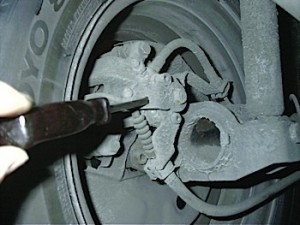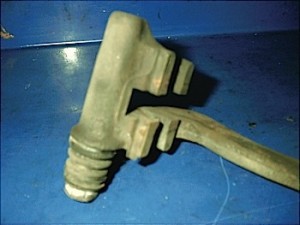
With Volkswagen (VW) rear disc brakes, the parking brake is integrated into the caliper. A ratchet mechanism inside the caliper is supposed to automatically adjust the travel of the caliper to maintain the proper clearance between the pad and rotor. The majority of vehicles you will see at your shop will have cable actuated parking brake mechanisms. Some later models have electronic parking brake mechanisms with motors on the caliper.
In actual operation, the ratchet can sometimes get stuck, frozen or just not work properly, especially after a pad replacement. When replacing the rear pads, you’ll need to turn and compress the piston back into the caliper with care to prevent damage to the ratchet. The best way to do this is with a caliper resetting tool available from many manufacturers. Do not use pliers that could damage the boot.
The caliper pistons turn clockwise to retract, so you’ll need to turn and compress in small steps, being careful not to put too much pressure on the adjusting mechanism. After resetting the caliper piston, pad replacement is the same as the front. The same inspection points are important here as well — the sliders and the pad carrier. On early cars, you’ll need to remove the wheel bearings and races to replace the rotor. Make sure you have seals available, as the factory ones don’t like to come out. When pressing the pistons back into the caliper, I use a bleed bottle connected to the open bleeder to prevent pushing fluid back into the reservoir. Especially on ABS cars, this can prevent problems associated with contamination.

Pad replacement is the same on all models with rear disc brakes and is accomplished by removing the slide pins and pulling the “knuckle” off of the pad carrier. On later models, the inner pad is clipped to the caliper. The important points to inspect on either design are the caliper slide pins, which should be coated with a high-temperature silicone grease designed for brake use. On cars where the pins are floating in the pad carrier, always remove them, clean and lubricate them and make sure they are free to move throughout their normal range. Also look closely at the surfaces of the pad carrier where they have been wearing on the carrier. Clean this area and lightly file it if the divots are so deep that new pads may get caught during their service life. On some models, there are still thin metal strips that are replaced with the pads to maintain a smooth surface.














